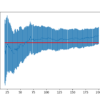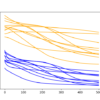A problem with many stochastic machine learning algorithms is that different runs of the same algorithm on the same data return different results. This means that when performing experiments to configure a stochastic algorithm or compare algorithms, you must collect multiple results and use the average performance to summarize the skill of the model. This […]










